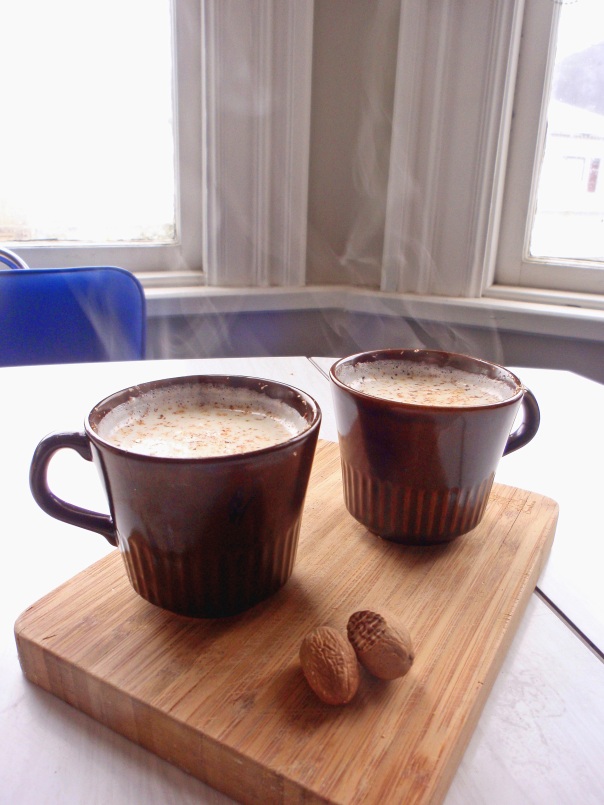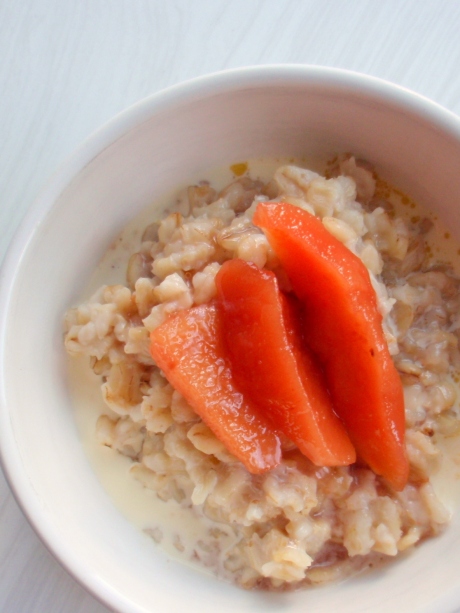I don’t normally post things the day I make them. I usually like to sit on a blog post for a day or two (at least), think about it a bit, maybe make the recipe again. But not this: the dishes are still all over the kitchen, my now-empty plate is sitting next to my laptop as I type, my fingers are still stained a brilliant hue of magenta from peeling cooked beetroot. This is one of those things that’s too good not to share immediately.
A couple weeks ago, I finally got myself a copy of Yotam Ottolenghi’s cookbook Plenty. It was one of those purchases you plot out months in advance and think longingly of every time you hear it mentioned or see it on a bookshelf somewhere. Anyway, ever since I got it I’d been thinking about making Ottolenghi’s beetroot, orange & black olive salad, mostly because I had all the ingredients on hand and I’ve been trying to become the kind of person who doesn’t let food go to waste.
But it’s been too cold to think about salads, and I’ve been living off over-the-top hearty fare: braised short ribs, Ottolenghi’s winter couscous, creamy rice pudding. Yes, when it’s cold out I almost exclusively cook with a cast-iron pot. So the salad went unmade.
Until today: a burst of sunshine, a bit of cheer injected into the otherwise dull winter cynicism a lot of us have been experiencing lately. So with a bit of optimism I set about making the salad, only to quickly discover I was out of olives (had forgotten they’d gone into some olive & feta muffins I made for Week Two of the Wellington on a Plate Bake Club we’ve been doing at work). I also only had one orange instead of two, and in a fit of excitement hadn’t read the ingredients list carefully enough to remember to pick up an endive at Moore Wilson’s.
The sun was still streaming through the balcony onto my kitchen counter, though, and not to be deterred, I made a few adjustments to Yotam’s original recipe: I halved it, substituted capers for the olives, used fennel instead of red endive, threw in a handful of watercress for good measure.
The result was the most beautiful, fresh-looking thing I’ve eaten probably since I got back from holiday in the Northern Hemisphere summer. It’s exquisite: not just the jewel-toned beetroot juices staining everything in sight, but the flavours too – sweet, salty, earthy, fresh, soft, sharp. Everything’s exactly as it should be.
BEETROOT, ORANGE & FENNEL SALAD
(adapted from Yotam Ottolenghi’s Plenty)
Slice off the tops and bottoms of a couple beetroots (I used 1 regular-sized purple one and a handful of baby golden beetroot) and boil in salted water until you can stick a knife in them easily. Let cool.
Meanwhile, cut an orange into wedges. Ottolenghi suggests you do this by first removing all the orange rind and white pith, then using a small, sharp knife to cut the orange into segments by running a knife down the side of the membranes. It means you won’t have any tough membraney bits in your orange pieces, which is nice, but if you’re short on time and don’t mind too much you could just as easily cut the orange into wedges and slice the flesh away from the skin. Either way, do this over a bowl to catch any dripping juices.
Peel the now-cool beetroot and slice into wedges; place in a mixing bowl. Add the oranges and their juice, 1/2 a sliced fennel bulb, 1 tbsp or so of capers, 1 tsp orange blossom water, 1 tbsp each red wine vinegar & olive oil, a handful of watercress, sea salt & freshly ground black pepper. Toss very gently with tongs so that everything’s nicely coated but still keeps its colour more or less.
Serves 2 as a side dish.
(For a version of this salad that’s truer to the original: Mairi’s post on Toast)








































